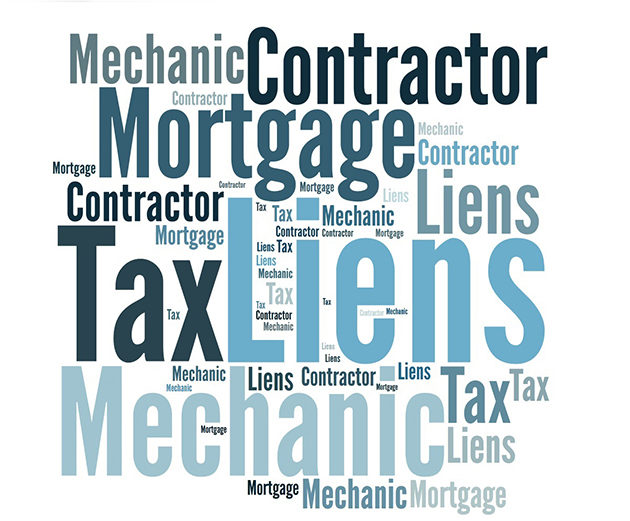Mechanic’s Lien Minefield
Condominiums require extra caution.

Lawyers love mechanic’s liens. More specifically, lawyers love correcting mechanic’s liens that contractors or lien-filing services frequently prepare incorrectly. Contractors see liens as a terrific “do-it-yourself” enterprise and figure that they can save on legal fees by preparing liens themselves or with the use of an outside service. This is not a good idea. The contractor often winds up paying an attorney more legal fees to cure a defective mechanic’s lien than they otherwise would have had to pay had they simply engaged counsel in the first place. And this is assuming that the defective lien can be cured — an unsafe assumption as illustrated by the case of Depth Capital, LLC v. White Hill Restoration Inc., 2011 NY Slip Op. 32764(U) (N.Y. Sup. Ct.).
The White Hill Lien
White Hill Restoration Inc. (“White Hill”) filed a Notice of Mechanic’s Lien for $81,656.25 against a 45-story, mixed use hotel and condominium apartment building located in midtown Manhattan. The lien specifically indicated that it was against the property “situated in the City of New York, County of New York, Block 1260, Lots 68, 1101-1156.” This property description was only one of a number of problems with the lien.
First, some of the current owners of the property — the petitioners — claimed that the mechanic’s lien was filed after the Declaration of Condominium for the property was filed. This Declaration changed the old lot numbers, Block 1260, Lots 68, 69 and 169, to new lot numbers, Block 1260, Lots 1101-1156. Second, the lien was filed after the petitioners purchased their condominium units and recorded their deeds. The petitioners did not consent to subject their condominium units to White Hill’s lien. Third, the petitioners did not ask White Hill to perform any work for them.
In light of these facts, the petitioners asked White Hill to discharge its Notice of Mechanic’s Lien voluntarily. After White Hill refused, the petitioners brought a summary proceeding in New York Supreme Court (the trial level court in New York) to have the lien judicially discharged.
Parts of condominium property
Before turning to the court’s decision, we need to remember that the subject property is a condominium. A condominium development primarily consists of two different kinds of real property: units and common elements. As New Jersey’s leading commentators on condominium law explain, “Under the conventional condominium form of ownership, title to each part of the condominium property intended for independent use (hereinafter “unit”), vests individually in each unit owner, while title to land, building exteriors and standard components, recreational and other facilities intended for common use (hereinafter “common elements”), is held by all unit owners in common, with each having some defined proportionate interest.” Smith, Estis & Li, New Jersey Condominium Law 18 (Gann 2017).
Thus, before a contractor files a lien against a condominium, it is important to know whether the lien should be filed against a unit or units and/or the common elements of the development.
New York has some very state-specific rules regarding mechanic’s liens and condominiums, creating a veritable minefield for anyone wishing to file a lien for work performed at a condominium development. Mechanic’s liens are creatures of state statutes and decisional law. In other words, the requirements to assert a lien on property vary from state to state. Each state has its own arcane set of rules and court decisions covering, among other things, the content of liens, filing deadlines, format of liens, service and recording. For example, the requirements in New York differ greatly from the requirements in Massachusetts.
Requirements under New York Law
Under New York law, a lien cannot include the common elements after the recording of the Declaration of Condominium without the express and unanimous consent of the units’ owners. (See N.Y. Real Property Law § 339-1.) As the court in Depth Capital pointed out, “[t]he lien must be limited to those particular units that are the subject of the lien. When the owner of a building is the subject of a lien, the lien cannot include those individual units that were sold after the filing of the Declaration of Condominium by the owner and the owner has not retained any interest in those individual units.”
If the mechanic’s lien does include common elements or units in which the owner has no interest, then the lien is considered a “blanket lien,” and it must be discharged as void. See Bridge View Tower, LLC v. Roco G.C. Corp., 69 A.D.3d 711 (2d Dep’t 2010).
In Depth Capital, White Hill included the old lot number, 68, in its liens. By doing so, the court found that White Hill improperly placed a mechanic’s lien on the common areas of the condominium in violation of New York’s Condominium Act. The court also held that the White Hill lien was a “blanket lien” that must be discharged. As a result, the court entered an order discharging the White Hill Notice of Mechanic’s Lien.
This brings us full circle to the question of whether the defective White Hill mechanic’s lien could have been cured. Although White Hill did not make a motion to amend its defective lien, the contractor in the Bridge View Tower case did — but to no avail.
As the Appellate Division explained: “With regard to the respondent’s motion for leave to amend the notice of lien pursuant to Lien Law § 12-a, that section “’presupposes the existence of a valid lien and may not be construed to revive an invalid notice of lien.’” Thus the Supreme Court erred in … granting the respondent’s motion for leave to amend the notice of lien.”
Takeaways
The lessons of the Depth Capital and Bridge View Tower translate across jurisdictions, regardless of where a lien is filed. Before an attorney goes to file a mechanic’s lien in any jurisdiction against condominium property, the lienor (or its counsel) must know: (a) the particular lien rules of the state in which the property is located; and (b) whether the lien is intended to encumber the unit(s) and/or common element(s) of the condominium property.
State laws governing mechanic’s liens against condominiums vary widely. For example, Massachusetts prohibits liens against common elements entirely. New York prohibits liens against common elements unless there is unanimous consent of the unit owners. California, does however, allow a lienor to file a “blanket lien” for improvements made to the common elements. In sum, it is critical to know the lien laws of your jurisdiction. Not knowing this information may be fatal to the filing of an enforceable mechanic’s lien against condominium property.
Steven Nudelman is a partner at the law firm of Greenbaum, Rowe, Smith & Davis LLP in Woodbridge and Roseland, New Jersey. He is a member of the firm’s Litigation Department and its Construction, Community Association, Alternative Dispute Resolution and Alternative Energy & Sustainable Development Practice Groups. He may be reached at 732-476-2428 or snudelman@greenbaumlaw.com





